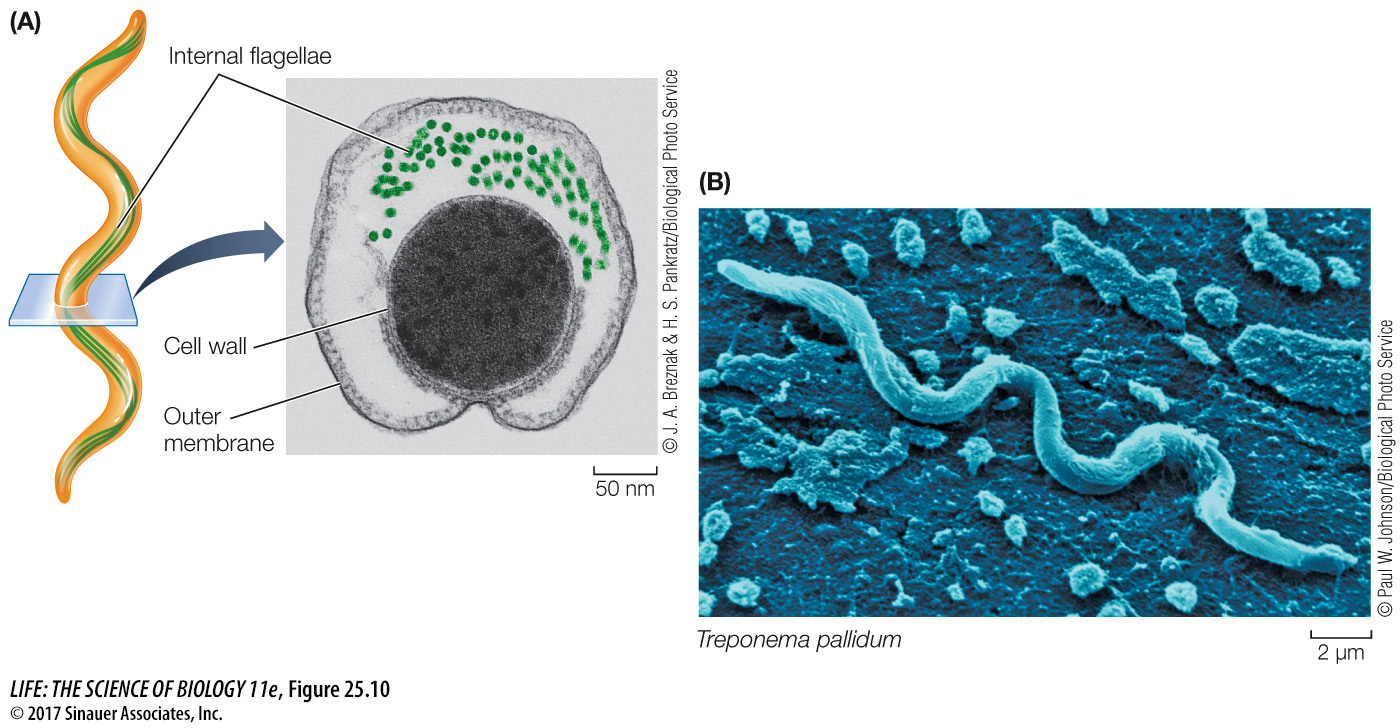Spirochetes are Gram-negative, motile bacteria characterized by a unique structure known as an axial filament, which is composed of multiple internal flagella running through the periplasmic space (Figure 25.10A). The cell body is a long cylinder coiled into a helix (Figure 25.10B). The internal flagellae begin at either end of the cell and overlap in the middle. Motor proteins connect the axial filament to the cell wall, enabling the corkscrew-like movement of the bacterium. Many spirochetes are parasites of humans; a few are pathogens, including those that cause syphilis and Lyme disease. Others live free in mud or water.

Figure 25.10 Spirochetes Get Their Shape from Axial Filaments (A) A spirochete from the gut of a termite, seen in cross section, shows the internal flagellae that compose the axial filament, which these helical prokaryotes use to produce a corkscrew-like movement. (B) This spirochete species causes syphilis in humans.
